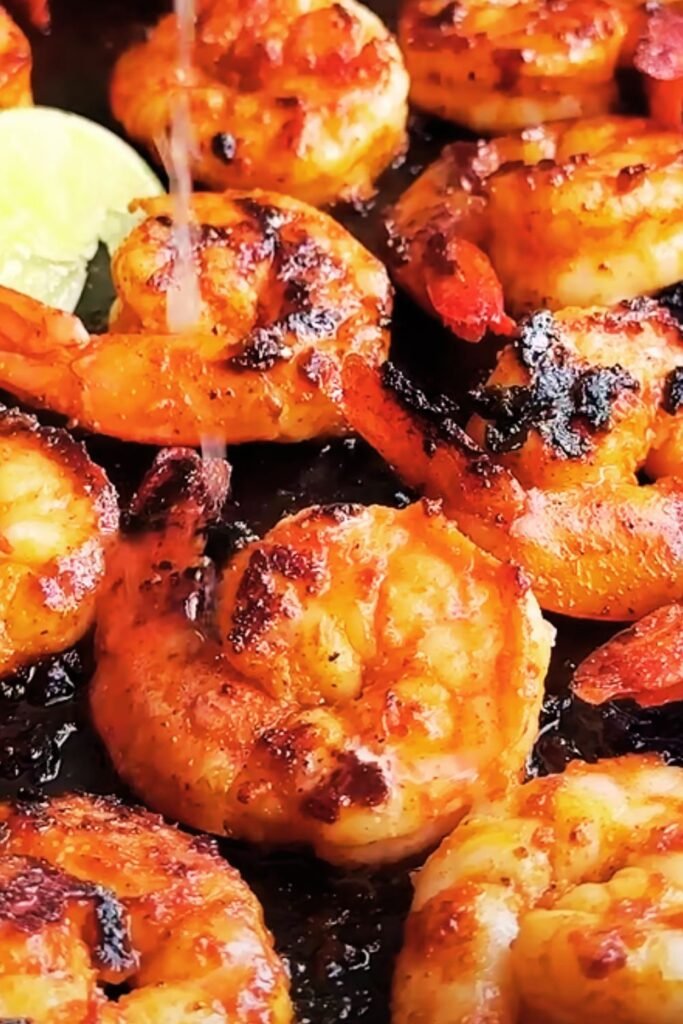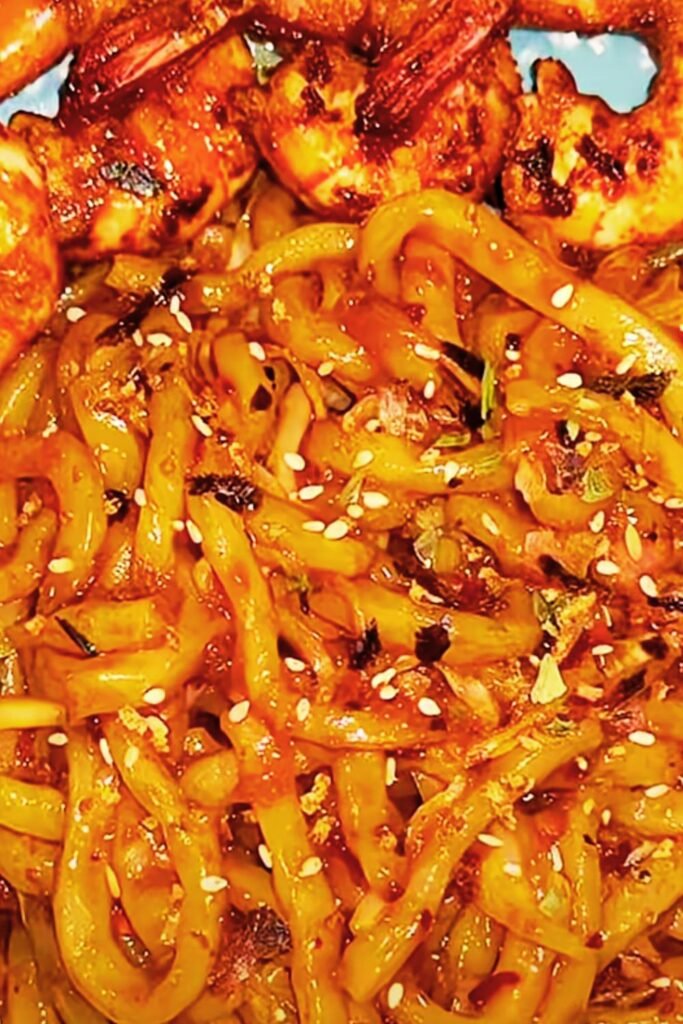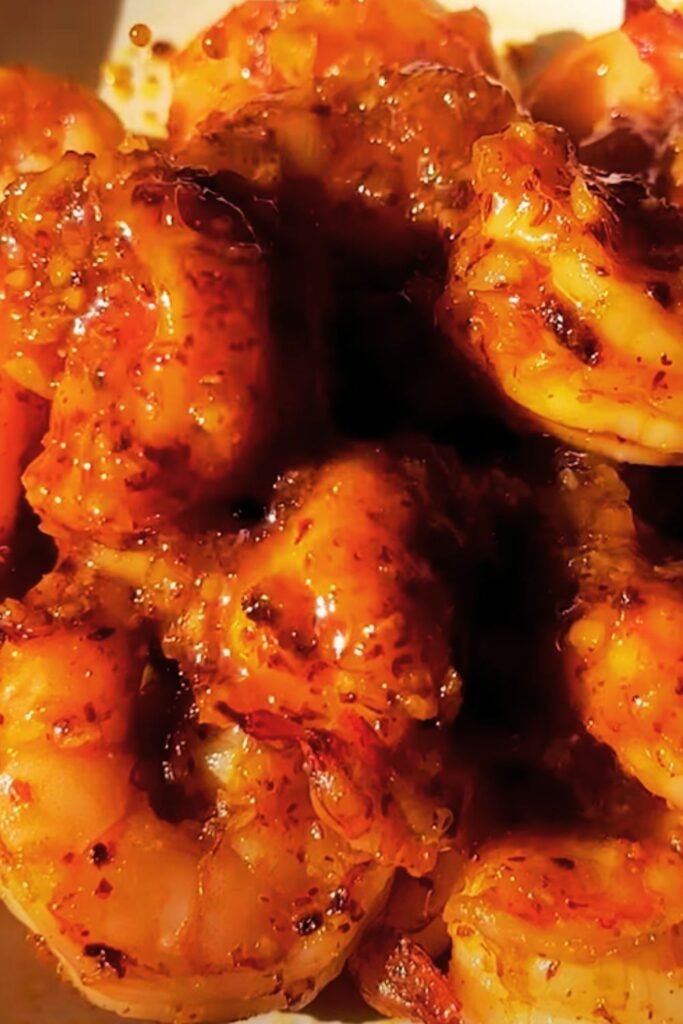When I think about perfect weeknight dinners, my mind immediately goes to this incredible garlic honey lime shrimp recipe. I’ve been making this dish for years, and it never fails to impress both my family and dinner guests. The combination of sweet honey, zesty lime, and aromatic garlic creates a flavor profile that’s simply irresistible.
What I love most about this recipe is how it transforms humble shrimp into something that feels restaurant-worthy, yet takes less than 20 minutes from start to finish. I’ve served this dish countless times, and every single person who tries it asks for the recipe. Today, I’m sharing all my secrets, tips, and variations to help you master this incredible dish.
Why I Fell in Love with This Recipe
My journey with this garlic honey lime shrimp began during a particularly hectic week when I needed something quick, delicious, and satisfying. I had some frozen shrimp in my freezer, a few pantry staples, and a serious craving for something with bold flavors. After experimenting with different combinations, I struck gold with this particular blend of ingredients.
The beauty of this recipe lies in its simplicity and versatility. I can serve it over rice for a complete meal, toss it with pasta for a quick dinner, or even pile it on top of a fresh salad for a lighter option. The sauce is what really makes this dish special – it’s sticky, sweet, tangy, and has just the right amount of garlic kick.
Essential Ingredients and Their Roles
Understanding each ingredient’s role helps me achieve consistent results every time I make this dish. Let me break down what makes this recipe work so beautifully:
Shrimp Selection and Preparation
- Large shrimp (16-20 count per pound)
- Peeled and deveined
- Tails on or off (your preference)
- Fresh or frozen (properly thawed)
The Flavor Base
- Fresh garlic cloves (minced)
- Fresh lime juice and zest
- Raw honey (preferably wildflower)
- Soy sauce (low sodium)
- Fresh ginger (grated)
Supporting Cast
- Olive oil or avocado oil
- Red pepper flakes
- Fresh cilantro
- Salt and black pepper
- Butter (optional but recommended)
My Perfect Garlic Honey Lime Shrimp Recipe
Ingredients List
| Ingredient | Quantity | Notes |
|---|---|---|
| Large shrimp (peeled, deveined) | 1½ pounds | 16-20 count per pound |
| Fresh garlic (minced) | 4 cloves | Don’t use pre-minced |
| Fresh lime juice | 3 tablespoons | About 2 large limes |
| Lime zest | 1 tablespoon | From the same limes |
| Raw honey | 3 tablespoons | Wildflower or clover work best |
| Low-sodium soy sauce | 2 tablespoons | Tamari works too |
| Fresh ginger (grated) | 1 teaspoon | Use microplane for best results |
| Olive oil | 2 tablespoons | Extra virgin preferred |
| Red pepper flakes | ¼ teaspoon | Adjust to taste |
| Fresh cilantro (chopped) | 2 tablespoons | For garnish |
| Salt | ½ teaspoon | Or to taste |
| Black pepper | ¼ teaspoon | Freshly ground |
| Butter (optional) | 1 tablespoon | For extra richness |
Step-by-Step Instructions
Preparation Phase
- Pat the shrimp completely dry with paper towels – this is crucial for getting a good sear
- Season shrimp with salt and pepper on both sides
- In a small bowl, whisk together honey, lime juice, lime zest, soy sauce, and grated ginger
- Mince garlic and set aside separately
- Chop cilantro for garnish
Cooking Process
- Heat olive oil in a large skillet or wok over medium-high heat
- When oil shimmers, add shrimp in a single layer (don’t overcrowd)
- Cook shrimp for 2 minutes without moving them – let them develop a golden crust
- Flip shrimp and cook for another 1-2 minutes until they’re pink and cooked through
- Push shrimp to one side of the pan
- Add minced garlic to the empty side and cook for 30 seconds until fragrant
- Pour the honey-lime mixture over everything
- Add red pepper flakes and toss everything together
- Cook for 1-2 minutes until sauce thickens slightly
- Remove from heat and stir in butter if using
- Garnish with fresh cilantro and serve immediately

Nutritional Information and Health Benefits
This garlic honey lime shrimp recipe isn’t just delicious – it’s also packed with nutrition. Here’s what makes it a healthy choice for your dinner table:
Nutritional Breakdown (Per Serving – Serves 4)
| Nutrient | Amount | % Daily Value |
|---|---|---|
| Calories | 245 | 12% |
| Protein | 28g | 56% |
| Total Fat | 8g | 12% |
| Saturated Fat | 1.5g | 8% |
| Cholesterol | 215mg | 72% |
| Sodium | 580mg | 25% |
| Total Carbs | 12g | 4% |
| Dietary Fiber | 0g | 0% |
| Sugars | 11g | – |
| Vitamin C | 15mg | 17% |
| Calcium | 95mg | 10% |
| Iron | 2.1mg | 12% |
Health Benefits I Love About This Dish
High-Quality Protein: Shrimp provides complete protein with all essential amino acids, supporting muscle maintenance and growth.
Low in Calories: Despite its rich flavor, this dish is relatively low in calories, making it perfect for weight management.
Rich in Selenium: Shrimp contains high levels of selenium, an important antioxidant that supports thyroid function.
Heart-Healthy: The combination of garlic and olive oil provides cardiovascular benefits.
Anti-Inflammatory Properties: Fresh ginger and garlic both have natural anti-inflammatory compounds.
Vitamin C Boost: Fresh lime juice provides vitamin C, supporting immune function.
Cooking Tips and Techniques I’ve Learned
Over the years, I’ve discovered several tricks that make this dish even better. Here are my most important tips:
Shrimp Selection and Preparation
Choosing the Right Shrimp: I always opt for large shrimp (16-20 count per pound) because they’re easier to work with and less likely to overcook. Wild-caught shrimp typically has better flavor than farm-raised.
Proper Thawing: If using frozen shrimp, I thaw them in the refrigerator overnight or under cold running water for 15-20 minutes. Never use warm water or the microwave.
Drying is Critical: The biggest mistake I see people make is not drying the shrimp thoroughly. Wet shrimp will steam instead of sear, preventing that beautiful golden crust.
Sauce Mastery
Honey Quality Matters: I use raw, unprocessed honey whenever possible. The flavor is more complex and natural than processed honey.
Fresh Lime is Essential: Bottled lime juice simply doesn’t compare to fresh. I always zest the limes first, then juice them.
Balancing Flavors: The key is finding the right balance between sweet (honey), sour (lime), salty (soy sauce), and spicy (red pepper flakes).
Cooking Techniques
Heat Control: Medium-high heat is perfect for this recipe. Too low and the shrimp won’t sear properly; too high and the garlic will burn.
Don’t Overcrowd: I cook in batches if necessary to ensure each shrimp has contact with the hot pan.
Timing is Everything: Shrimp cook incredibly fast – usually 2-3 minutes total. Overcooked shrimp become rubbery and tough.

Serving Suggestions and Pairings
This versatile dish works beautifully with many different sides and preparations. Here are my favorite ways to serve it:
Over Grains and Starches
Jasmine Rice: The fragrant, slightly sticky texture of jasmine rice pairs perfectly with the sauce.
Coconut Rice: I make this by cooking jasmine rice in coconut milk instead of water – it’s incredible with the lime flavors.
Quinoa: For a protein-packed, gluten-free option that adds a nutty flavor.
Cauliflower Rice: A low-carb alternative that still soaks up the delicious sauce.
With Vegetables
Stir-Fried Vegetables: I often add bell peppers, snap peas, or broccoli directly to the pan after cooking the shrimp.
Asian Slaw: A crunchy cabbage slaw with sesame dressing provides great texture contrast.
Grilled Asparagus: The charred flavor complements the sweet and tangy sauce beautifully.
Creative Presentations
Lettuce Wraps: Serve the shrimp in butter lettuce cups for a light, handheld meal.
Tacos: Pile the shrimp into warm tortillas with avocado and lime crema.
Salad Topper: Add warm shrimp to a bed of mixed greens with additional lime vinaigrette.
Recipe Variations I Love to Make
One of the things I love most about this recipe is how easily it adapts to different flavors and dietary needs. Here are some of my favorite variations:
Spicy Honey Lime Shrimp
I increase the red pepper flakes to ½ teaspoon and add a finely minced jalapeño pepper along with the garlic. Sometimes I’ll finish with a drizzle of sriracha for extra heat.
Coconut Honey Lime Shrimp
I replace half the olive oil with coconut oil and add 2 tablespoons of coconut flakes to the sauce. The result is a tropical twist that’s absolutely divine.
Herb-Crusted Version
Before cooking, I toss the seasoned shrimp with a mixture of panko breadcrumbs, chopped fresh herbs (parsley, cilantro, and chives), and a little olive oil. This creates a delightful crunchy coating.
Low-Carb Keto Version
I replace the honey with sugar-free maple syrup or a keto-friendly sweetener like monk fruit. The flavor is slightly different but still delicious.
Common Mistakes and How to Avoid Them
I’ve made plenty of mistakes with this recipe over the years, and I want to help you avoid them:
Overcooking the Shrimp
The Problem: Rubbery, tough shrimp that are unpleasant to eat.
The Solution: Watch the shrimp carefully and remove them from heat as soon as they turn pink and opaque. They should have a slight curve but not be tightly curled.
Burning the Garlic
The Problem: Bitter, acrid flavors that overpower the dish.
The Solution: Add garlic after the shrimp are cooked and keep the heat at medium. Garlic cooks much faster than shrimp.
Watery Sauce
The Problem: Thin sauce that doesn’t coat the shrimp properly.
The Solution: Make sure to cook the sauce for 1-2 minutes after adding it to allow it to reduce and thicken slightly.
Not Seasoning Properly
The Problem: Bland shrimp that lack flavor.
The Solution: Season the shrimp with salt and pepper before cooking, and taste the sauce before serving to adjust seasoning.
Storage and Meal Prep Tips
This recipe works wonderfully for meal prep, and I often make extra portions for busy weeknights:
Storage Guidelines
| Storage Method | Duration | Notes |
|---|---|---|
| Refrigerator | 3-4 days | Store in airtight container |
| Freezer | 2-3 months | Sauce may separate slightly |
| Room Temperature | 2 hours max | Don’t leave out longer |
Meal Prep Strategy
I like to prep the components separately:
- Cook the shrimp and sauce as directed
- Store in meal prep containers with dividers
- Keep rice or quinoa in separate compartments
- Reheat gently in microwave or skillet
Reheating Tips
Microwave: 30-60 seconds on medium power, stirring halfway through.
Stovetop: Add a splash of water or broth to a skillet and heat gently over medium-low heat.
Oven: 350°F for 5-10 minutes, covered with foil to prevent drying out.

Seasonal Adaptations and Ingredient Substitutions
Living in different seasons and having various dietary restrictions has taught me how to adapt this recipe throughout the year:
Summer Variations
During hot summer months, I love serving this shrimp chilled over a bed of mixed greens with additional lime vinaigrette. I’ll also add fresh summer herbs like basil or mint for a bright, refreshing twist.
Winter Comfort Version
In colder months, I serve this over warm coconut rice with roasted vegetables like butternut squash or Brussels sprouts. The warmth and richness feel perfect for chilly evenings.
Ingredient Substitutions
Honey Alternatives: Maple syrup, agave nectar, or brown sugar work well.
Lime Substitutions: Lemon juice works in a pinch, though the flavor will be different.
Soy Sauce Alternatives: Tamari for gluten-free, coconut aminos for soy-free.
Oil Options: Avocado oil, coconut oil, or even butter for different flavor profiles.
Frequently Asked Questions
Q: Can I use frozen shrimp for this recipe? A: Absolutely! I use frozen shrimp all the time. Just make sure to thaw them completely and pat them very dry before cooking. Frozen shrimp often have more moisture, so this step is even more critical.
Q: How do I know when the shrimp are perfectly cooked? A: Look for shrimp that are pink and opaque throughout, with a slight C-curve. They should feel firm but not tough when you press them gently. Overcooked shrimp will be tightly curled and feel rubbery.
Q: Can I make this recipe ahead of time? A: While it’s best served fresh, you can make the sauce ahead of time and store it in the refrigerator for up to 3 days. Cook the shrimp just before serving for the best texture.
Q: What’s the best way to get extra flavor into the shrimp? A: I sometimes marinate the shrimp in a mixture of olive oil, salt, pepper, and a little lime juice for 15-30 minutes before cooking. This adds an extra layer of flavor.
Q: Can I double this recipe for a crowd? A: Yes, but I recommend cooking in batches to avoid overcrowding the pan. Overcrowded shrimp will steam rather than sear, and you’ll lose that beautiful golden color.
Q: Is this recipe suitable for meal prep? A: Definitely! I make this recipe for meal prep regularly. The flavors actually improve after sitting for a day. Just be careful not to overcook the shrimp initially since they’ll continue to cook slightly when reheated.
Q: Can I use pre-cooked shrimp? A: I don’t recommend it for this recipe. Pre-cooked shrimp will become overcooked and rubbery when heated again. Fresh or frozen raw shrimp work much better.
Q: What if I don’t have fresh ginger? A: You can substitute with ¼ teaspoon ground ginger, but fresh ginger really makes a difference in this recipe. I always keep fresh ginger in my freezer – it grates easily when frozen and lasts for months.
Q: How spicy is this dish? A: With ¼ teaspoon of red pepper flakes, it has a very mild heat that most people enjoy. You can easily adjust the spice level to your preference by adding more or less red pepper flakes.
Q: Can I add vegetables to this recipe? A: Absolutely! I often add bell peppers, snap peas, broccoli, or asparagus. Add harder vegetables like broccoli first, then softer ones like bell peppers toward the end of cooking.
This garlic honey lime shrimp recipe has become one of my absolute favorites because it delivers restaurant-quality flavors with minimal effort and time. The combination of sweet honey, bright lime, and aromatic garlic creates a sauce that’s both complex and approachable. Whether you’re cooking for a weeknight dinner or entertaining guests, this dish never fails to impress.
I encourage you to make this recipe your own by experimenting with different serving styles and flavor variations. The basic technique is so versatile that once you master it, you’ll find yourself coming back to it again and again. Each time I make this dish, I’m reminded of why simple, fresh ingredients prepared with care always create the most memorable meals.